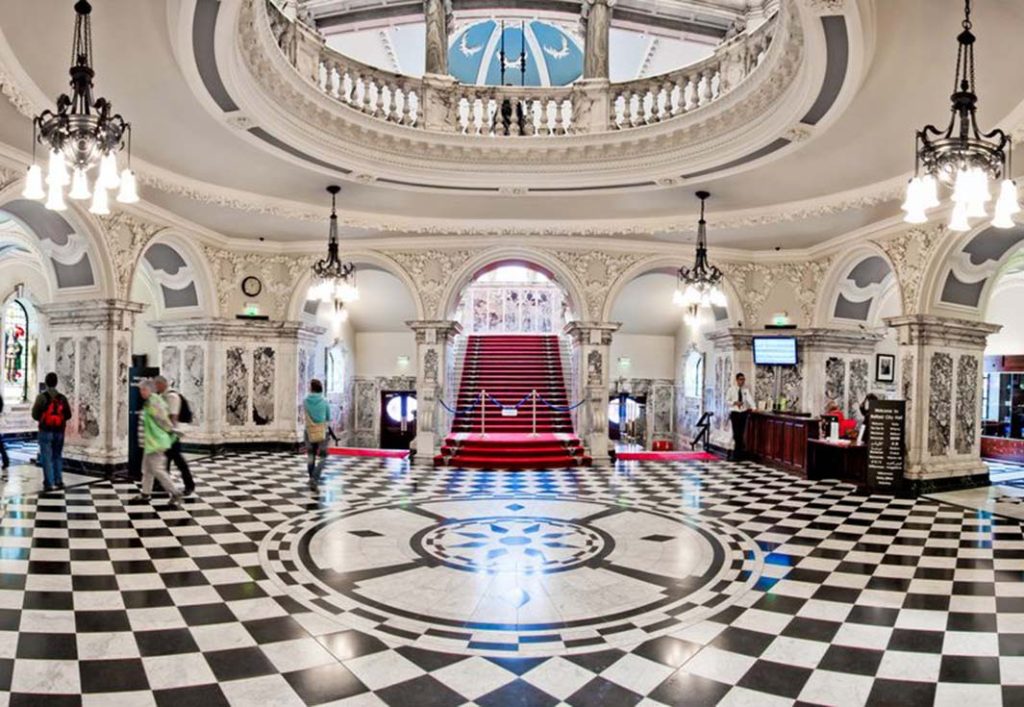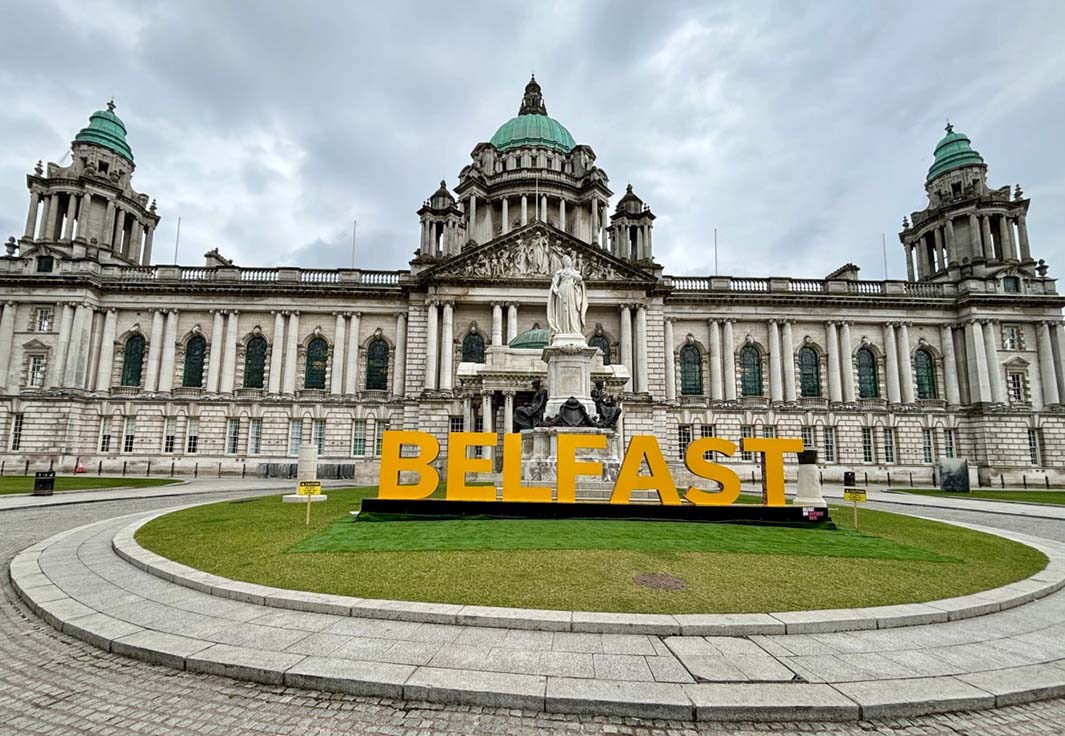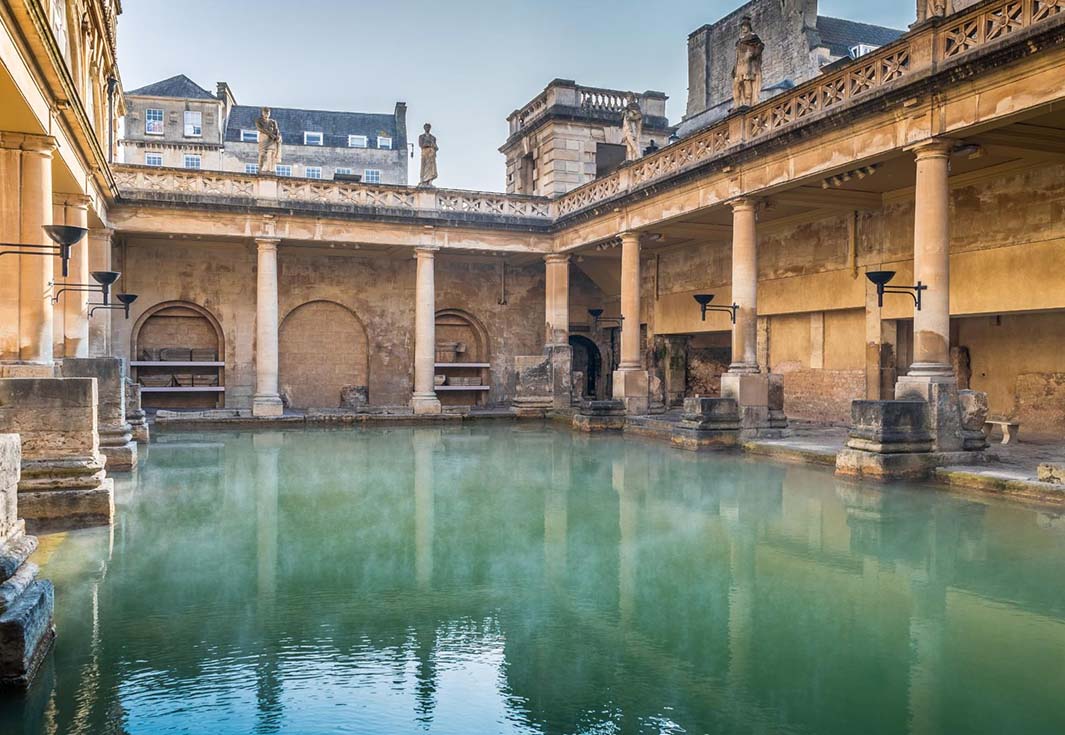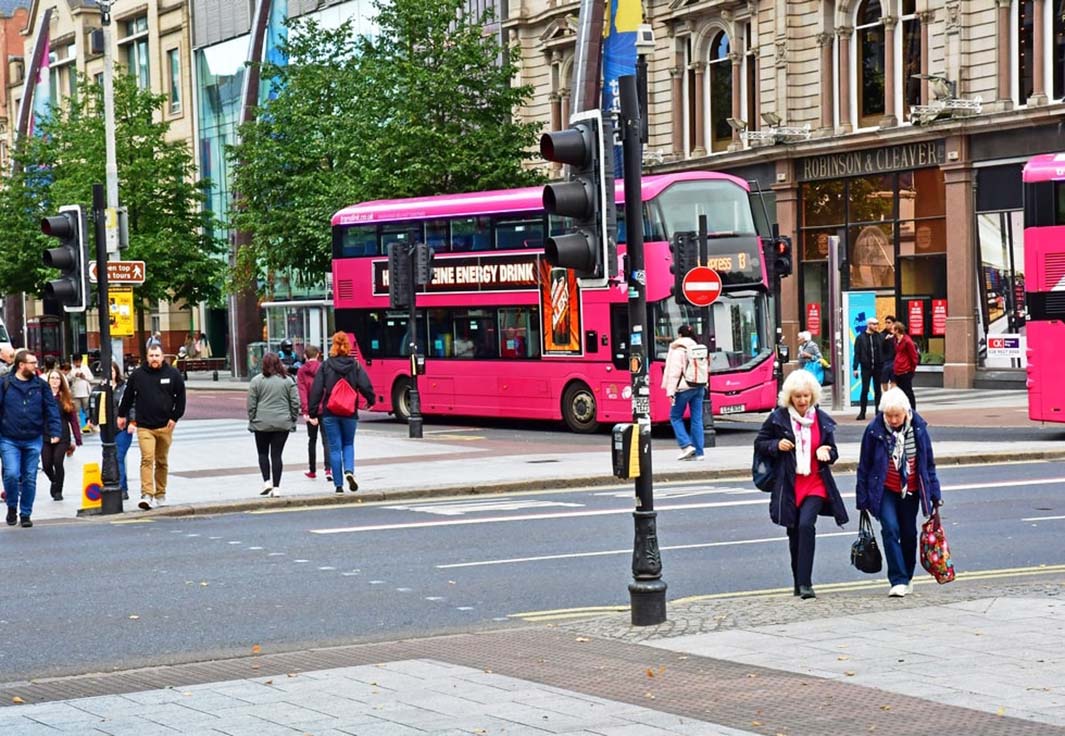Belfast, the vibrant capital of Northern Ireland, is a city steeped in history, culture, and natural beauty. From its tumultuous past to its modern-day revival, Belfast offers a rich tapestry of experiences for travelers.
1. Titanic Belfast: Reliving the Legacy of the Unsinkable Ship
Location: Titanic Quarter, 1 Olympic Way, Queens Road, Belfast BT3 9EP
How to Get There: Titanic Belfast is located in the Titanic Quarter, a short walk or taxi ride from Belfast city center. If you prefer public transport, take Metro Bus 26 from Donegall Square East directly to the Titanic Quarter.
Discounts and Ticket Prices: Adult tickets are priced at £19.50, with discounts available for seniors, students, and families. Booking online in advance often includes a small discount or combination tickets with other nearby attractions.
Personal Experience and Recommendation:
As I approached Titanic Belfast, the sheer size and architectural brilliance of the building were awe-inspiring. Designed to resemble the bow of the Titanic herself, this museum stands as a tribute to Belfast’s maritime heritage and the ill-fated Titanic.
Inside, the exhibitions are comprehensive and engaging, taking visitors through the Titanic’s conception, construction, maiden voyage, and tragic sinking. The interactive displays and multimedia presentations bring history to life, offering a poignant glimpse into the lives of passengers and crew.
The highlight for me was walking through the reconstructed shipyards and boarding the SS Nomadic, the last remaining White Star Line vessel. Standing on the decks, I could almost feel the echoes of history as I imagined what it must have been like for those embarking on the Titanic over a century ago.
After the museum tour, I visited the Titanic Belfast’s cafe, which offers panoramic views of the slipways where the Titanic was built. Enjoying a cup of tea while overlooking Belfast Lough added a peaceful conclusion to my visit.
Recommendation: Titanic Belfast is a must-visit for history enthusiasts and anyone interested in the Titanic’s story. I would rate it 9/10 for its immersive exhibits and poignant storytelling. Be sure to book tickets online in advance to skip the queues and consider combining your visit with other attractions in the Titanic Quarter.
Nearby Attractions: After exploring Titanic Belfast, take a leisurely stroll along the Maritime Mile, which features various sculptures and points of interest related to Belfast’s maritime history. The SS Nomadic, located nearby, offers additional insights into Belfast’s shipbuilding legacy.
2. Belfast City Hall: A Beacon of Civic Pride

Location: Donegall Square, Belfast BT1 5GS
How to Get There: Belfast City Hall is centrally located in Donegall Square, easily accessible by foot from most city center hotels or via Metro Bus routes that pass through Donegall Square.
Discounts and Ticket Prices: Entry to Belfast City Hall is free for visitors. Guided tours are available at certain times, offering deeper insights into the building’s history and architecture.
Personal Experience and Recommendation:
Approaching Belfast City Hall, I was struck by its grandeur and the imposing white Portland stone façade. Built in the Baroque Revival style, the City Hall is a testament to Belfast’s prosperous industrial past and civic pride.
Inside, the interior is equally impressive, with marble halls, sweeping staircases, and stained glass windows depicting Belfast’s history and culture. The Council Chamber, with its ornate woodwork and historical artifacts, provides a glimpse into the city’s governance over the years.
One of the highlights of my visit was joining a guided tour, which offered fascinating insights into the City Hall’s architecture and the significance of its various rooms. Learning about the building’s role in Belfast’s development and its connection to key historical events was both educational and enriching.
The grounds surrounding City Hall are beautifully landscaped, featuring statues, memorials, and a tranquil garden dedicated to Belfast’s sister cities. Taking a moment to relax in the garden was a peaceful respite from the bustling city center.
Recommendation: Belfast City Hall is a must-see for its architectural beauty and historical significance. I would rate it 8/10 for its free admission, informative tours, and well-maintained grounds. Consider timing your visit to coincide with one of the guided tours for a deeper understanding of Belfast’s civic heritage.
Nearby Attractions: After visiting City Hall, explore the nearby Linen Quarter, known for its historic pubs, trendy cafes, and vibrant street art. The Ulster Hall and Grand Opera House are also within walking distance, offering a variety of cultural performances throughout the year.
3. Crumlin Road Gaol: A Glimpse into Belfast’s Dark Past
Location: 53-55 Crumlin Road, Belfast BT14 6ST
How to Get There: Crumlin Road Gaol is located north of Belfast city center, approximately a 15-minute drive or a short taxi ride. Several Metro Bus routes also pass near the gaol.
Discounts and Ticket Prices: Adult tickets are £10.50, with discounts available for seniors, students, and families. Combination tickets with other local attractions may be available, so check the website for current offers.
Personal Experience and Recommendation:
Approaching Crumlin Road Gaol, I felt a mix of anticipation and solemnity. This imposing Victorian-era prison, operational from 1845 to 1996, offers a haunting glimpse into Belfast’s troubled past.
The guided tour began in the reception area, where we learned about the gaol’s history and its role in Northern Ireland’s turbulent political landscape. Walking through the corridors and communal areas, our guide recounted stories of famous inmates, prison life, and escape attempts.
The highlight of the tour was visiting the condemned man’s cell and the execution chamber. Standing in these stark, somber spaces, I couldn’t help but reflect on the hardships endured by prisoners and the weight of history that permeates the gaol’s walls.
The gaol’s museum exhibits further contextualize its history, with displays on the Irish War of Independence, the Troubles, and the prison’s role in shaping Belfast’s social and political landscape.
Recommendation: Crumlin Road Gaol offers a sobering yet compelling insight into Belfast’s history. I would rate it 7/10 for its informative tours and preservation of historical artifacts. It’s a must-visit for history buffs and those interested in Northern Ireland’s troubled past. Book your tickets in advance, especially during peak tourist seasons.
Nearby Attractions: After visiting Crumlin Road Gaol, explore the nearby Clifton House, a historic Georgian building that offers guided tours and insights into Belfast’s philanthropic history. The Belfast Zoo and Cave Hill Country Park are also within reach for those seeking outdoor adventures.
4. St. George’s Market: Belfast’s Vibrant Culinary and Craft Haven

Location: 12-20 East Bridge Street, Belfast BT1 3NQ
How to Get There: St. George’s Market is located in the heart of Belfast city center, near the waterfront. It’s within walking distance from most city center hotels or accessible via Metro Bus routes that pass through central Belfast.
Discounts and Ticket Prices: Entry to St. George’s Market is free. Prices for food, crafts, and souvenirs vary by vendor, so be prepared to browse and negotiate.
Personal Experience and Recommendation:
Entering St. George’s Market, I was immediately engulfed in a sensory delight of sights, sounds, and smells. Established in the 19th century, this bustling market is a vibrant hub of local culture, offering everything from fresh produce and artisanal crafts to live music and delicious street food.
The market’s architecture, with its wrought iron and red brick facade, is a nod to Belfast’s industrial heritage. Inside, the atmosphere is lively, with vendors enthusiastically showcasing their wares and engaging with customers.
I started my visit by exploring the food stalls, which boasted an impressive array of local delicacies. From traditional Irish stew and seafood chowder to gourmet burgers and freshly baked pastries, the options were endless. I couldn’t resist sampling a bit of everything, soaking in the flavors and chatting with the friendly vendors.
Beyond food, St. George’s Market is a treasure trove of handmade crafts, vintage clothing, and unique souvenirs. I picked up a beautifully crafted pottery piece as a memento of my visit, appreciating the skill and artistry of Belfast’s local artisans.
Live music performances added to the market’s festive atmosphere, creating a lively backdrop as I explored the stalls and interacted with the vendors.
Recommendation: St. George’s Market is a must-visit for food lovers, shoppers, and anyone wanting to experience Belfast’s vibrant community spirit. I would rate it 9/10 for its diverse offerings, lively atmosphere, and authentic local charm. Plan to visit on a weekend when the market is at its busiest, and come hungry to sample a wide range of delicious treats.
Nearby Attractions: After exploring St. George’s Market, take a leisurely walk along the River Lagan Towpath, which offers scenic views of the waterfront and opportunities for birdwatching. The Ulster Museum and Botanic Gardens are also nearby and perfect for a relaxing afternoon of culture and nature.
5. Cave Hill: Belfast’s Natural Wonderland and Historic Landmark
Location: Cave Hill Road, Belfast BT15 5GR
How to Get There: Cave Hill is located north of Belfast city center and can be reached by car or taxi in about 15 minutes. Alternatively, bus services run from the city center to nearby stops, followed by a short walk to the Cave Hill Country Park entrance.
Discounts and Ticket Prices: Entry to Cave Hill Country Park is free of charge, making it an accessible destination for nature enthusiasts and families alike. There are no specific ticket prices, although parking fees may apply depending on where you park your vehicle.
Personal Experience and Recommendation:
Ascending Cave Hill, I was greeted with breathtaking views of Belfast and its surrounding countryside. Known locally as “Napoleon’s Nose” due to its resemblance to the profile of the French emperor, Cave Hill offers both natural beauty and historical intrigue.
The hiking trails are well-maintained and range from leisurely walks suitable for families to more challenging routes for experienced hikers. I opted for the “Hibernia Walk,” which took me through lush woodlands and past scenic viewpoints overlooking Belfast Lough and beyond.
Halfway through my hike, I reached the famous “McArt’s Fort,” an ancient hill fort dating back over 2,500 years. The fort’s earthworks and panoramic vistas made it a perfect spot to rest and reflect on Belfast’s rich history.
As I continued my ascent, I passed by “Cave Hill Adventurous Playground,” a popular spot for families with children. The playground’s zip lines, climbing frames, and nature-themed play areas offered a welcome break for younger visitors.
Reaching the summit, I was rewarded with stunning panoramic views stretching from the Mourne Mountains in the south to the Scottish coast in the north. The sight of Belfast spread out below, framed by rolling hills and coastline, was truly awe-inspiring.
Recommendation: Cave Hill Country Park is a must-visit for nature lovers and outdoor enthusiasts visiting Belfast. I would rate it 8/10 for its scenic beauty, historical landmarks, and accessible hiking trails suitable for all ages. Pack a picnic and plan to spend a few hours exploring the park’s diverse landscapes and enjoying the spectacular views.
Nearby Attractions: After hiking Cave Hill, visit Belfast Castle, located adjacent to the park, for a guided tour of its historic interior and beautiful gardens. The nearby Belfast Zoo is also worth a visit, offering a diverse collection of animals and conservation initiatives.
6. Ulster Museum: Discovering Belfast’s Artistic and Cultural Treasures

Location: Botanic Gardens, Belfast BT9 5AB
How to Get There: Ulster Museum is located within Botanic Gardens, south of Belfast city center. It’s easily accessible by foot from most city center hotels or via Metro Bus routes that pass through Botanic Avenue.
Discounts and Ticket Prices: Entry to Ulster Museum is free, with special exhibitions occasionally requiring paid tickets. Donations are welcome to support the museum’s conservation efforts and educational programs.
Personal Experience and Recommendation:
Stepping into Ulster Museum, I was greeted by an impressive collection of artifacts, artworks, and interactive exhibits that spanned thousands of years of history and culture. From ancient Irish treasures to modern art installations, the museum offers something for every visitor.
The museum’s galleries are thoughtfully curated, providing insights into Belfast’s natural history, industrial heritage, and artistic achievements. I began my visit in the “Early Peoples” gallery, where exhibits showcased prehistoric artifacts and insights into early human settlements in Ireland.
Moving through the museum, I explored the “Troubles and Beyond” exhibition, which offers a nuanced perspective on Northern Ireland’s recent history and social changes. The interactive displays and personal stories provided a deeper understanding of the region’s complex political landscape.
One of the highlights of my visit was the “Art of the Troubles” collection, featuring works by local artists that reflect the turbulent times of Northern Ireland’s conflict. The artworks, ranging from paintings to sculptures, offered poignant reflections on themes of identity, conflict, and reconciliation.
Before leaving, I visited the museum’s café, which overlooks Botanic Gardens and offers a tranquil setting to unwind and reflect on the exhibits. The café’s menu features locally sourced ingredients and delicious pastries, making it a perfect spot for a coffee break.
Recommendation: Ulster Museum is a cultural gem that shouldn’t be missed during your visit to Belfast. I would rate it 9/10 for its diverse collections, informative exhibits, and free admission. Plan to spend several hours exploring the museum’s galleries and taking advantage of the educational opportunities it offers.
Nearby Attractions: After visiting Ulster Museum, explore Botanic Gardens, renowned for its exotic plant collections and Victorian glasshouses. The nearby Queen’s University Belfast also offers guided tours of its historic campus and architectural highlights.
Belfast is a city of contrasts, where history meets modernity and natural beauty intertwines with cultural richness. Each of the six attractions I explored offered a unique perspective on Belfast’s past, present, and future. Whether you’re captivated by the Titanic’s legacy, intrigued by Belfast’s political history, or seeking outdoor adventures, Belfast has something to offer every traveler.



